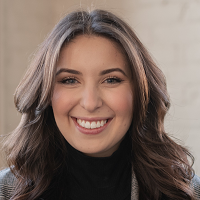Group text message thread of five teenage girls:
Hey, would anyone want to come over tonight to hangout? My parents bought Cosmic Brownies and we can rent a movie from Blockbuster.
I’m in!
What time? I can come over after dinner.
Can’t wait!
Hi ladies, sorry I can’t come again. I have to grandma-sit!
My grandma Stella loved animal print clothing, always made her bed, had her nails perfectly done every single day, sneaked human food to the dog and absolutely hated Robert Pattinson in the Twilight movies. My grandma also had Alzheimer’s disease, which would slowly progress almost parallel to my adolescent development.
I was only 14 years old when my grandparents moved into my family’s home for my mom to take on the primary caregiver role. My younger brother and I would help out by hanging out with our grandparents. Looking back on my experience more than a decade later, I now realize I was actually contributing to a family system of care by providing social, emotional and instrumental caregiving. It wasn’t until I was pursuing a doctoral degree in geropsychology—a specialty that applies psychology to helping older adults—that I learned these terms and saw my experiences defined. During my teenage years, the only framework I had for understanding the care and supervision I was providing for my grandma was that it was like babysitting. So, naturally, I called it “grandma-sitting.”
According to the AARP and the 2020 National Alliance for Caregiving report, more than 5.4 million children and adolescents in the United States provide care for family members with chronic illnesses, disabilities or other health conditions.
Researchers call us “caregiving youth.” I find this term somewhat humorous, considering I would never have called myself a caregiver. Maybe it was imposter syndrome—I wasn’t doing as much caregiving as my mom was. Maybe it was that every caregiver I saw portrayed on television, in movies and the news was over the age of 50. Maybe I thought I couldn’t be a caregiver at the same time as still being a care recipient. Maybe it was that none of my friends were caregiving or that no one asked about how my grandmother’s diagnosis affected me. Maybe it was all of the above. Probably that one.
How does it actually feel to be part of the caregiving youth? Here’s my answer: What do you get when you add fear + love + sadness + guilt + resentment + jealousy + pride + gratitude? Confusion.
It was a really confusing period of my life. Honestly, I spent the next 15 years trying to make sense of it. Yet I would never change my unique childhood experience (well, as unique as 5.4 million others) for the world. Now that my grandmother has passed away, I remember the quality time I spent with her fondly and recognize the vast impact it has had on my life. Caregiving youth has turned into caregiving adulthood, as I was inspired to pursue a career in clinical geropsychology to help families like my own navigate the complex emotions of a dementia diagnosis.
Ironically, I got to know my grandmother (and myself) better than ever before during a time when she was losing a lot of her sense of her own identity. But that time has been, and continues to be, the greatest gift to me.
Brownies and Blockbuster with friends could never compare.

Anastasia Canell has a PhD in clinical geropsychology, a specialty that focuses on understanding and helping older people and their families. As a postdoctoral fellow, she works in hospitals, skilled nursing facilities and elsewhere, providing psychotherapy for individuals and groups. She also does research and has written and spoken extensively about issues associated with aging, such as the way becoming an older person’s caregiver impacts young adults (18 to 25).



